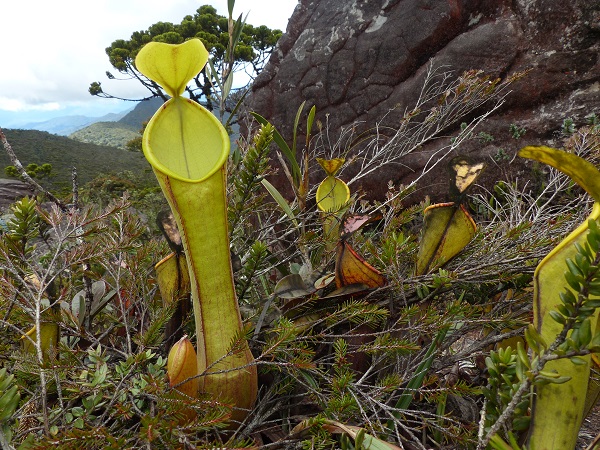GMBA publication - Sub-national data is crucial for global mountain biodiversity conservation

To assess biodiversity goals, reports are typically based on entire countries. Researchers from the Global Mountain Biodiversity Assessment at the University of Bern and the University of Lausanne challenge this country-level analysis regarding conservation efforts for mountain biodiversity. They emphasize that significant sub-national differences are being overlooked and highlight the need for cross-country conservation initiatives.
Global sustainability and conservation agendas - such as the 2030 Agenda for Sustainable Development or the Kunming-Montreal Global Biodiversity Framework – require countries to annually provide indicators on progress towards their goals. Despite the availability of data for breaking down these indicators to the scale at which policy-making, planning, and conservation actually happen, reporting is typically performed at the scale of entire countries. In a study published today in Nature Sustainability, the Global Mountain Biodiversity Assessment (GMBA) program hosted by the Universities of Bern and Lausanne addresses this issue using the example of mountain ecosystems and the protection of their biodiversity. The team led by Amina Ly, PhD student at Stanford University, and GMBA executive director Davnah Urbach, found that the level of mountain biodiversity protection (Sustainable Development Goal indicator 15.4.1) can reliably be calculated at sub-national scale and varies considerably across mountain ranges.
Sub-national variations in protected area coverage
The team examined how well important sites for the persistence of mountain species are covered by protected areas. They found that within many countries, this coverage varies considerably between mountain ranges. In Bhutan and Switzerland for example, coverage rates vary between 0 and 100%, which is largely different from the national 2020 averages of 47% and 35%. Hence, the GMBA team reveals differences within countries that are overlooked by country-level averages and indicates where protection needs to increase. "Decisions on where to establish protected areas and how to sustainably manage mountain biodiversity are typically made at sub-national scales. Responsible authorities need information that is relevant at the scale at which policymaking, prioritization, and management happen", says Davnah Urbach.
Adequate spatial resolution enables cross-border protection
Many mountain ranges cross national borders. Reporting on biodiversity protection at mountain-range level within countries informs the assignment of responsibilities between countries and supports transboundary conservation in international cooperation. In the case of the European Alps, Switzerland protects only about 30% of its high biodiversity mountain areas, which is less than what neighboring countries, like Italy (around 70%) or Germany (over 95%), are doing. "These significant discrepancies in protection rates between countries demonstrate that more can be done to achieve homogenous conservation across borders," comments Davnah Urbach. To this end, the researchers have created "one-page fact sheets" for individual countries and cross-border mountain systems, detailing which key biodiversity areas in mountains are protected. These documents are publicly available.
Mountain regions especially at risk
Biodiversity in mountain regions is affected by various factors, such as changes in agricultural practices, climate change, and mass tourism. These mountain areas host an exceptional diversity of uniquely adapted species, and the benefits that mountain ecosystems provide are vital for people. For instance, species-rich vegetation assemblages on steep slopes prevent erosion and reduce the risk of landslides. Environmental changes in these regions can therefore have far-reaching consequences.
The current study provides timely information for guiding mountain countries in the context of the Global Biodiversity Framework and in formulating national biodiversity strategies and action plans. According to Markus Fischer, co-chair of GMBA, “this study will very much support the conservation of mountain biodiversity, and we aim to trigger a global discussion on supporting decision-making by providing relevant indicators at meaningful scales.”
Amina Ly, Jonas Geschke, Mark A. Snethlage, Kerrie L. Stauffer, Jasmine Nussbaumer, Dominic Schweizer, Noah S. Diffenbaugh, Markus Fischer, Davnah Urbach: Subnational biodiversity reporting metrics for mountain ecosystems, Nature Sustainability. DOI: 10.1038/s41893-023-01232-3
